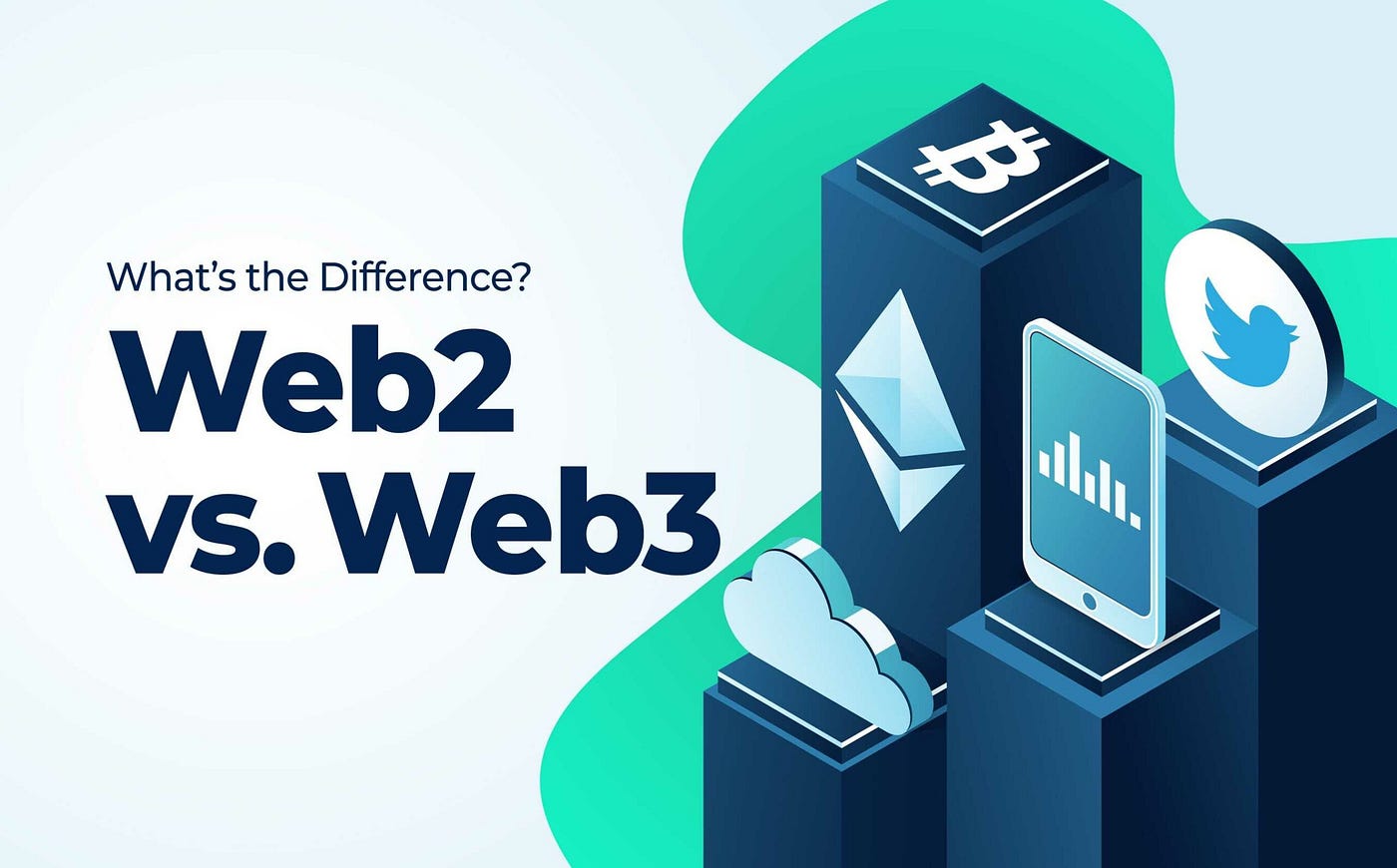The main differences between Web3 and Web2 are in their architecture and philosophical approach to the internet:
Web2:
Centralized Control: In Web2, control and ownership of data, content, and platforms are mostly centralized among a few large corporations and organizations.
Data Ownership: Users often have limited control and ownership over their personal data, which is collected and monetized by centralized platforms.
Intermediaries: Middlemen, such as social media platforms and online marketplaces, mediate interactions and transactions, taking a share of the value generated.
Lack of Trustlessness: Web2 relies on trust in centralized authorities for identity, data storage, and transactions, which can lead to privacy and security concerns.
Web3:
Decentralization: Web3 aims to decentralize control, moving away from central authorities to more distributed and peer-to-peer networks.
User Ownership: Users have greater control and ownership over their data and digital identities, often enabled by blockchain and decentralized technologies.
Elimination of Intermediaries: Web3 technologies seek to eliminate middlemen and allow direct interactions between users, potentially reducing fees and increasing efficiency.
Trustlessness: Web3 technologies leverage cryptography and smart contracts to create trustless systems, where trust in intermediaries is minimized or eliminated.
Cryptocurrencies and Tokens: Many Web3 applications use cryptocurrencies and tokens for various purposes, such as decentralized finance (DeFi) and governance.
Censorship Resistance: Web3 technologies can make it more challenging for centralized authorities to censor content and transactions.
In essence, Web3 represents a shift toward a more decentralized, user-centric, and trustless internet, with a focus on greater control over data and identity. It relies on technologies like blockchain and decentralized applications to achieve these goals. Web2, on the other hand, is associated with the centralized, corporate-controlled web that has dominated the internet for many years.
